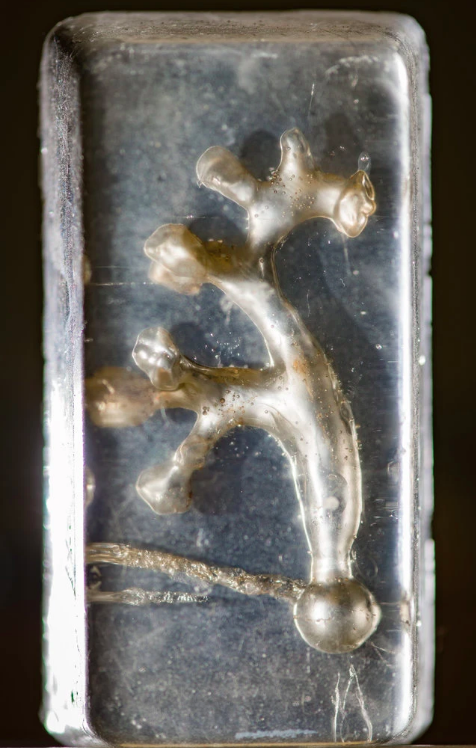The Medical Version of a Rolling Stone

Every so often, our bodies do something they shouldn’t. For example, our kidneys aim to filter out bad stuff while letting good stuff go through; when that works, great. But lots can go wrong. One of the less serious, but apparently quite painful (I don’t know this from experience and hope to never) problems? Kidney stones. As the Mayo Clinic summarizes, kidney stones are “hard deposits made of minerals and salts that form inside your kidneys” and, basically, need to come out of your body the only way they can. That exit path is made for streams of liquids, not chunks of hard deposits, and… yeah, no fun.
The trick to passing a kidney stone without pain is to get it out of your kidney before it gets too big. As the Atlantic notes, “most [kidney stones] are small, and they pass through us without issue. But many linger in our kidneys and grow, sending hundreds of thousands of people to emergency rooms and costing around $3.8 billion every year in treatment and extraction. The pain of passing a larger stone is often compared to child birth.” But it’s not like you can just take your kidney and shake it until the little rocks come out, right?
Well, maybe there is. You can go for a rollercoaster ride.
There have been stories of people going on rollercoasters and, a short time after, passing smaller kidney stones with little pain or complaint. But until 2016, most experts wrote that off as mere coincidence. And for years, Dr. David Wartinger, an osteopathic urological surgeon at Michigan State University, was one of those skeptics. But one of his patient’s experiences changed his mind. The patient had taken a vacation to Disney World in Orlando, Florida, and rode on the theme park’s iconic rollercoaster, the Big Thunder Mountain Railroad, a few times during the trip. And three of those rides ended with a surprise: the guy passed a kidney stone after each. As Wartinger told CNN, “It’s hard to ignore that kind of a story, no matter how much of a cynic you are.”
He and others got testing. Using a fake kidney — or, more accurately, a silicon cast of the tubing inside a kidney, seen at the top — Dr. Wartinger and other researchers went for a ride. A lot of rides. The New York Times explains:
Holding their model at kidney height, the doctors took 20 rides on Big Thunder Mountain, with three stones in the model at a time. They saw kidney stones move from the periphery of their kidney model toward the top of the ureter in many cases. Success rates were higher in the back of the roller coaster than the front — 64 percent versus 17 percent — probably because a bumpier ride in the back meant more jostling.
The rollercoaster therapy doesn’t work for all kidney stone patients, they found; larger stones were simply too big to be dislodged by Big Thunder Mountain, and the coaster didn’t do enough shaking to break the stones into smaller, passable pieces. Further, not all rollercoasters are necessarily as effective as the Disney one. (The actual paper, if you want to give it a read, is here.)
As for the cost of the tickets to Disney? Well, it’s expensive, yes, but it may be worth it. Per the Michigan State University press room, the typical, emergency treatment for kidney stones can be even more expensive: “An estimated that around 300,000 people per year go to an emergency room suffering from kidney stones and the cost for treatment could range anywhere between $5,000 to $10,000.”
Bonus fact: Not into rollercoasters? Try lemonade. According to Dr. Roger Sur, director of UC San Diego Comprehensive Kidney Stone Center, lemonade can help prevent the formation of kidney stones. In 2010, the school’s website reported that “in a recent study conducted by Sur, lemonade therapy – drinking four ounces of reconstituted lemon juice in two liters of water per day – was shown to decrease the rate of stone formation from 1.00 to 0.13 stones per patient.” But you may want to make it unsweetened — according to the National Kidney Foundation, “eating too much fructose correlates with increasing risk of developing a kidney stone” and “fructose can be found in table sugar and high fructose corn syrup.”
From the Archives: Where No Kidney Stone has Gone Before: Kidney stones can be a force for good — if you’re famous enough.
